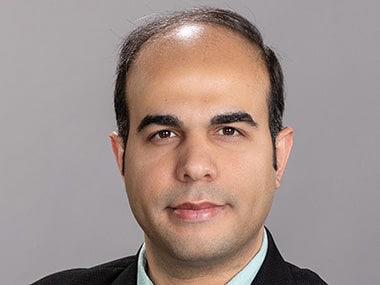Mahdi Mehrtash: Renewable energy and the clean energy transition
 Title
Title
Renewable energy and the clean energy transition
Mentor
Department
Electrical and Biomedical Engineering
Biosketch
Mahdi Mehrtash, Ph.D., is a senior member of the Institute of Electrical and Electronics Engineers (IEEE) and an assistant professor in the Department of Electrical and Biomedical Engineering at the University of Nevada, Reno. He is also affiliated with the Ralph O'Connor Sustainable Energy Institute at Johns Hopkins University, where he serves as an assistant research professor. Using concepts of stochastic and global optimization, Mehrtash is addressing various power and energy system challenges, including power system expansion planning, integration of renewable energy systems, zero-energy buildings, and the development of future electricity markets.
Project overview
The Pack Research Experience Program (PREP) student would conduct research on one of the two projects listed below.
Project 1: Greener mines: Using renewable energy to reduce pollution in mining
Mining operations use a large amount of electricity, often from sources like coal or gas that release greenhouse gases into the air. Using renewable energy systems (RESs)—such as solar panels and wind turbines—can help power mines in a cleaner way. Integrating these clean energy methods decreases the amount of greenhouse gases mines release, which benefits the environment and contributes to the fight against climate change. The electricity needs of mining operations are significant, and meeting these needs with renewables can make mining more sustainable.
Switching to renewable energy in mines comes with challenges. Mines require a steady and reliable supply of electricity; however, renewable sources can be unpredictable due to factors such as weather and location. Existing equipment in mines may not be compatible with renewable energy without modifications. Other common issues include the need for proper planning, affordable technology, and systems that can adapt to both renewable and conventional power sources.
This project will develop strategies to design hybrid energy systems that combine renewable and conventional power sources to ensure reliability in mining operations. The expected outcome is a framework that reduces greenhouse gas emissions while maintaining cost-effectiveness and operational stability for greener mining practices.
Project 2: Designing the future grid for reliability and the clean energy transition
As society moves toward cleaner sources of electricity such as wind and solar, our power grid must evolve to meet new demands. This raises an important question: how do we move renewable energy across long distances and at the same time ensure the grid remains reliable and affordable? This project focuses on power system planning, particularly how new technologies like high-voltage direct current (HVDC) transmission lines and energy storage can strengthen the grid and support the integration of renewable energy. Undergraduate researchers will review case studies and explore how engineers and planners make decisions about the future grid.
Another important aspect of this work is managing uncertainty. Renewable energy varies with the weather, demand changes daily, and future technology costs are not always predictable. By using optimization tools, we can evaluate many “what-if” scenarios and identify strategies that keep the grid reliable under different conditions. Students will understand how these uncertainties are factored into the planning process of modern power systems. By the end of the project, students will have both research experience and a deeper understanding of how engineering decisions today shape the power grid of tomorrow.
Pack Research Experience Program information and application